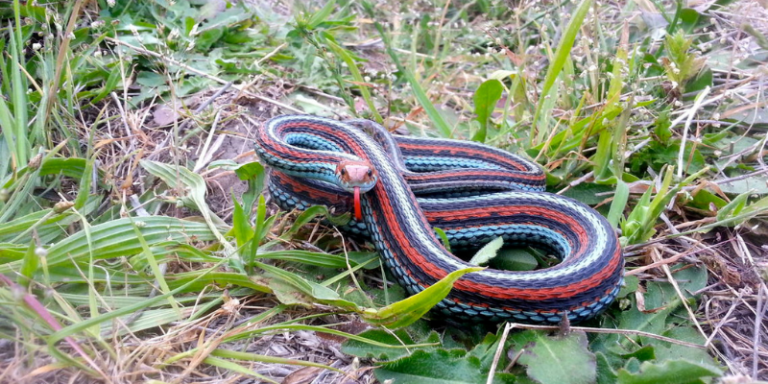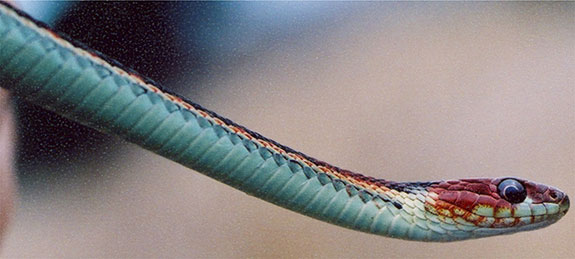San Francisco Airport Gives a Home to Endangered Snakes
By: GenZ Staff | August 26, 2021 | 546 Words

(Richard Kim, USGS Western Ecological Research Center)
The colorful San Francisco garter snake is one of America’s endangered species – but it has found a sanctuary in an unlikely place. One of the nation’s busiest airports has taken on the mantle of protecting these snakes, despite 55 million people passing through each year.
Away from its runways, the San Francisco International Airport owns a 180-acre piece of land – at first glance it may look like an overgrown empty place, but in fact, it’s home to over one thousand endangered serpents. A study by the U.S. Geological Survey recently found 1,300 snakes on the land – a bigger population than had ever been recorded in one place.
Declared “threatened” in 1967, San Francisco garter snakes thrive on the airport-owned land. This didn’t happen by accident, though. The airport has a wildlife biologist who has been working for over ten years to create a refuge for the snakes. Ponds have been built to keep them moist and make sure they have a supply of food, while long grasses give them shelter.

San Francisco International Airport
“Everything that happens there is designed to protect these species,” said airport spokesperson Doug Yakel. “For us, success would be that there is a stable thriving population, but to find out we had the largest population – it was really a pleasant surprise.”
The San Francisco garter snake is one of the most brightly colored yet shy reptiles around, boasting red, turquoise, and black stripes. Herpetologist Robert Stebbins called it “the most beautiful serpent in North America.”
U.S. Fish & Wildlife Service describes the species:
“The first things you notice are the burnt-orange head, the slender, turquoise-blue body and bold stripes. The stripe pattern that runs along the snake’s “shoulders” is black, red-orange, black. Large adults can reach a meter (3 feet) or more in length.”
The garter snakes have a wetland habitat, but as the Bay Area has developed, the natural landscape has been replaced with an urban setting of buildings and roads, leading to habitat destruction. The snakes have also faced a hard time due to droughts, which reduced their sources of prey, including their favorite food of California red-legged frogs. The snakes’ natural predators are birds such as hawks and herons, as well as bullfrogs – but pet cats and dogs are also a threat in urban areas. The snakes also started dying out because humans would collect them for their beautiful skins.

Sheila Larsen / USFWS
“It is really hopeful,” said Brian Halstead, a wildlife biologist who studied the area. “It is kind of neat that we can use this snake that is endangered as an ambassador for other snakes,” he added. “Maybe we can reel people in and change their mind if we can show them how important it is not to lose these snakes, the frogs they eat, or any aspect of the ecosystems they depend on.”
Does this amazing recovery mean the rare snake’s troubles are over? Maybe not; the airport is just one oasis in a tough region. The snake is native to a very small area, so it’s hard to grow the population by very much. Still, there is now a ray of hope for this eye-catching species.
















